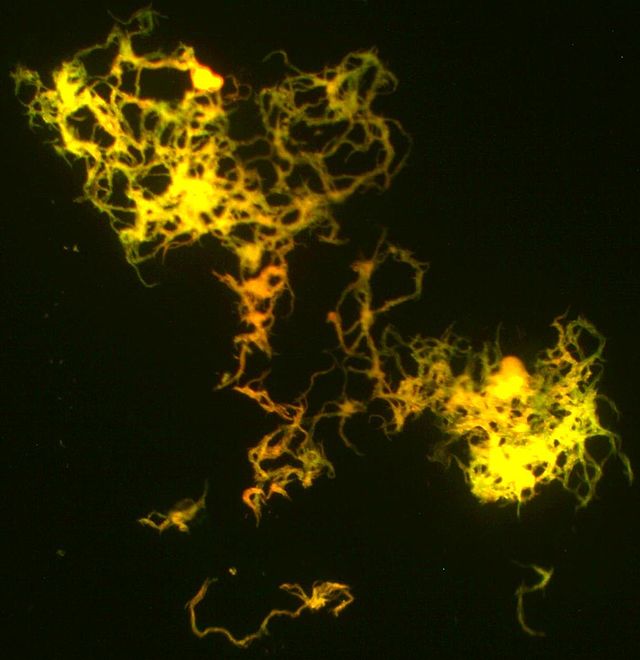Top Qs
Timeline
Chat
Perspective
Luminescence
Spontaneous emission of light by a substance From Wikipedia, the free encyclopedia
Remove ads
Luminescence is a spontaneous emission of radiation from an electronically or vibrationally excited species not in thermal equilibrium with its environment. [1] A luminescent object emits cold light in contrast to incandescence, where an object only emits light after heating.[2] Generally, the emission of light is due to the movement of electrons between different energy levels within an atom after excitation by external factors. However, the exact mechanism of light emission in vibrationally excited species is unknown.


The dials, hands, scales, and signs of aviation and navigational instruments and markings are often coated with luminescent materials in a process known as luminising.[3]
Remove ads
Types
- Ionoluminescence, a result of bombardment by fast ions
- Radioluminescence, a result of bombardment by ionizing radiation
- Electroluminescence, a result of an electric current passed through a substance
- Cathodoluminescence, a result of a luminescent material being struck by electrons
- Chemiluminescence, the emission of light as a result of a chemical reaction
- Bioluminescence, a result of biochemical reactions in a living organism
- Electrochemiluminescence, a result of an electrochemical reaction
- Lyoluminescence, a result of dissolving a solid (usually heavily irradiated) in a liquid solvent
- Candoluminescence, is light emitted by certain materials at elevated temperatures, which differs from the blackbody emission expected at the temperature in question.
- Mechanoluminescence, a result of a mechanical action on a solid
- Triboluminescence, generated when bonds in a material are broken when that material is scratched, crushed, or rubbed
- Fractoluminescence, generated when bonds in certain crystals are broken by fractures
- Piezoluminescence, produced by the action of pressure on certain solids[4]
- Sonoluminescence, a result of imploding bubbles in a liquid when excited by sound
- Crystalloluminescence, produced during crystallization
- Thermoluminescence, the re-emission of absorbed energy when a substance is heated[5]
- Photoluminescence, a result of the absorption of photons
- Fluorescence, traditionally defined as the emission of light that ends immediately after the source of excitation is removed. As the definition does not fully describe the phenomenon, quantum mechanics is employed where it is defined as there is no change in spin multiplicity from the state of excitation to emission of light.[2]
- Phosphorescence, traditionally defined as persistent emission of light after the end of excitation. As the definition does not fully describe the phenomenon, quantum mechanics is employed where it is defined as there is a change in spin multiplicity from the state of excitation to the emission of light.[2]
Remove ads
Applications
- Light-emitting diodes (LEDs) emit light via electro-luminescence.[7]
- Phosphors, materials that emit light when irradiated by higher-energy electromagnetic radiation or particle radiation
- Laser, and lamp industry
- Phosphor thermometry, measuring temperature using phosphorescence
- Thermoluminescence dating
- Thermoluminescent dosimeter
- Non-disruptive observation of processes within a cell.[8]
Luminescence occurs in some minerals when they are exposed to low-powered sources of ultraviolet or infrared electromagnetic radiation (for example, portable UV lamps) at atmospheric pressure and atmospheric temperatures. This property of these minerals can be used during the process of mineral identification at rock outcrops in the field or in the laboratory.
Remove ads
History
The term luminescence was first introduced in 1888 by German physicist Eilhard Wiedemann.[9]
See also
- List of light sources
- Scientific American, "Luminous Paint" (historical aspects), 10-Dec-1881, pp.368
- High-visibility clothing
References
External links
Wikiwand - on
Seamless Wikipedia browsing. On steroids.
Remove ads
